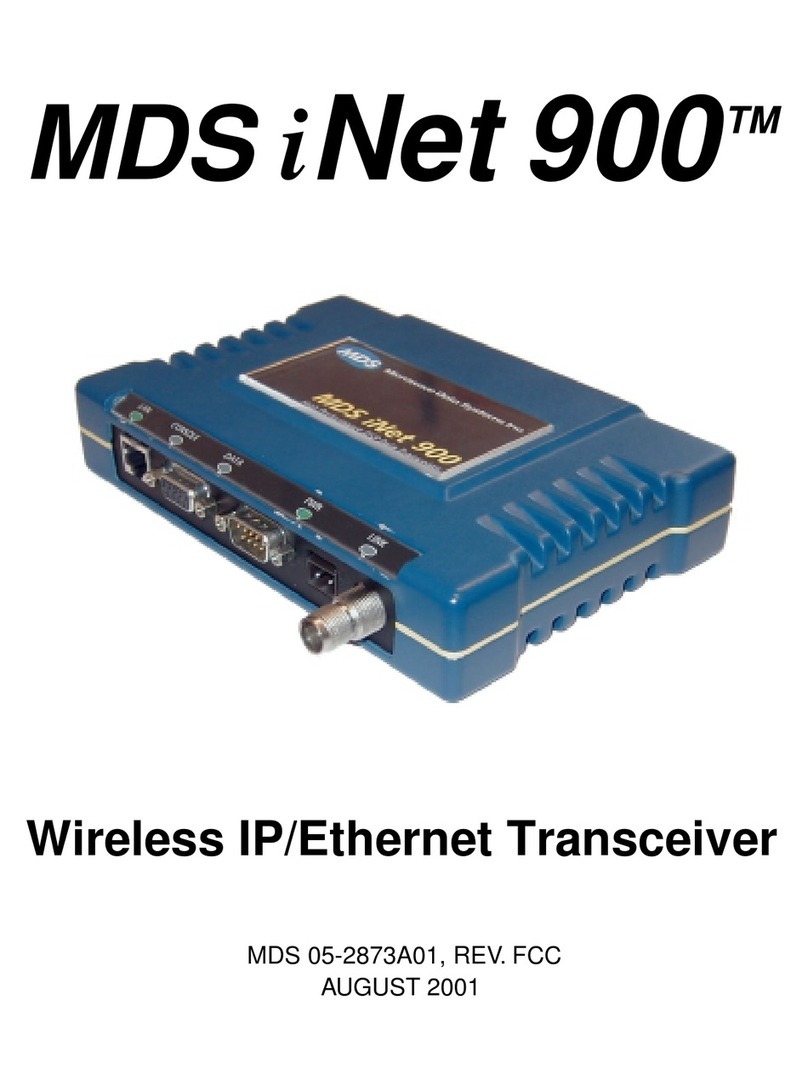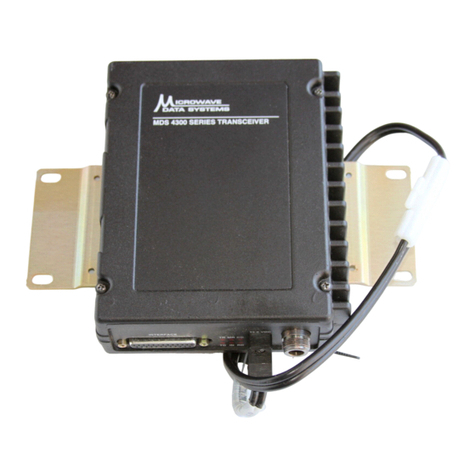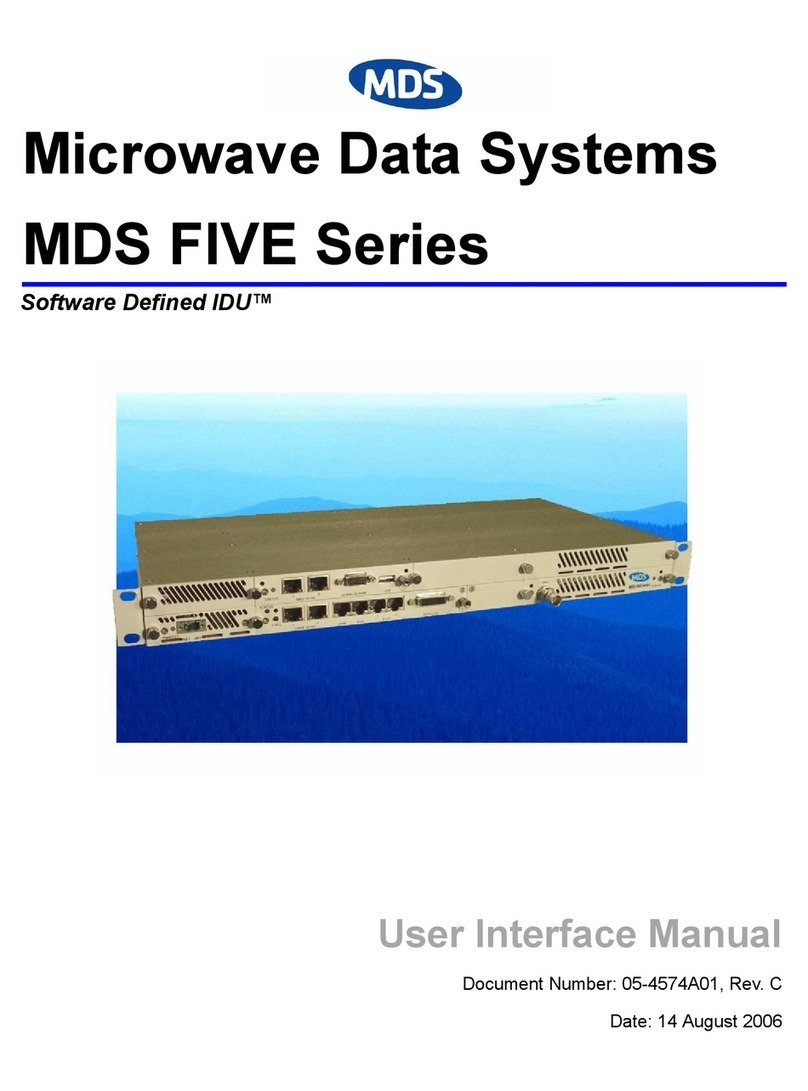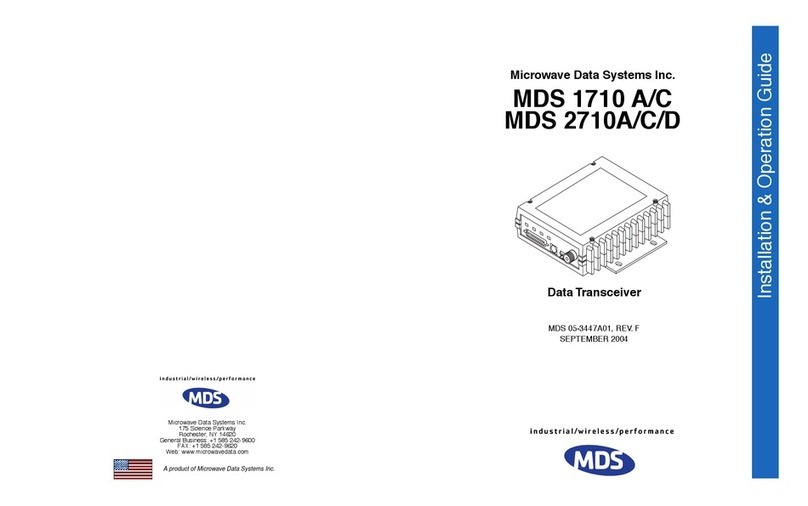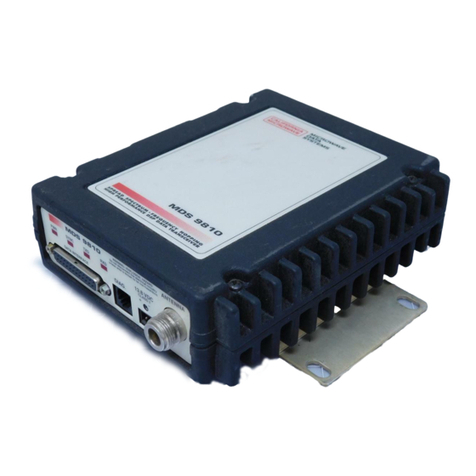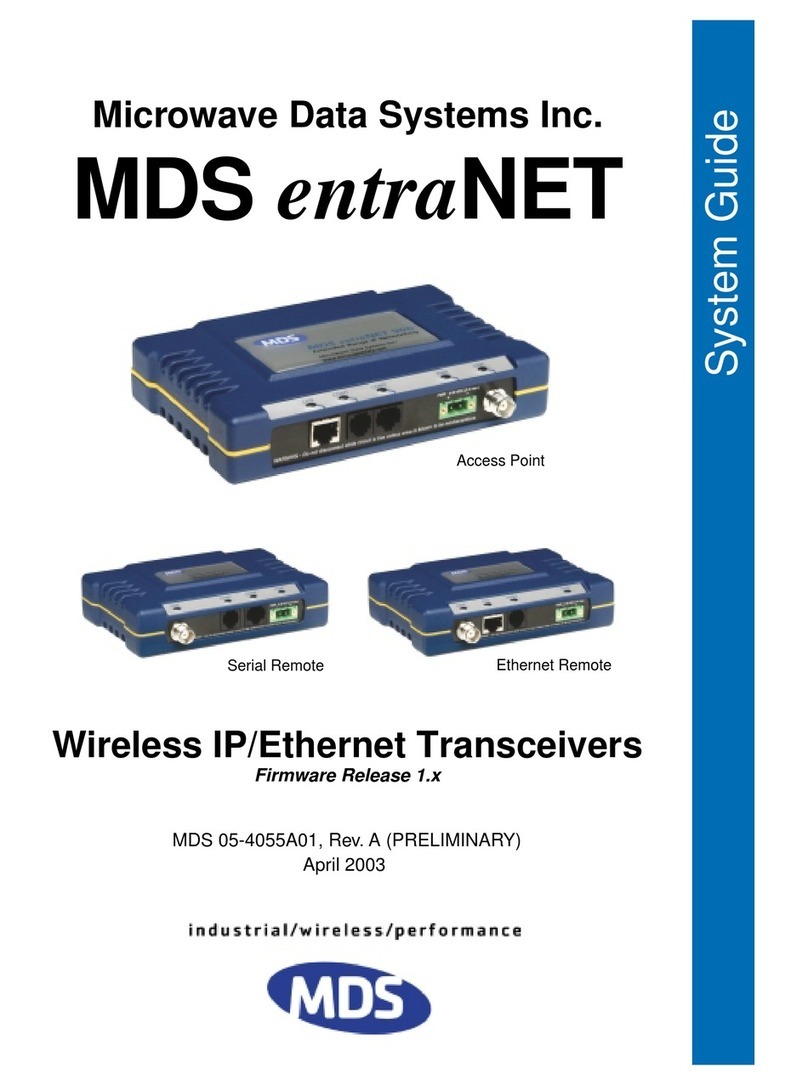
MDS 05-2708A01, Rev. B MDS TransNET 900 I&O Guide v
UL/CSA Notice
This product is available for use in Class I, Division 2, Groups A, B, C & D Hazardous Loca-
tions. Such locations are defined in Article 500 of the National Fire Protection Association
(NFPA) publication
NFPA 70
, otherwise known as the National Electrical Code.
The transceiver has been recognized for use in these hazardous locations by two independent
agencies—Underwriters Laboratories(UL) and theCanadian StandardsAssociation(CSA). The
UL certification for the transceiver is as a Recognized Component for use in these hazardous
locations, in accordance with UL Standard 1604. The CSA Certification is in accordance with
CSA STD C22.2 No. 213-M1987.
UL/CSA Conditions of Approval: The transceiver is not acceptable as a stand-alone unit for use
in the hazardous locations described above. It must either be mounted within another piece of
equipment which is certified for hazardous locations, or installed within guidelines, or conditions
of approval, as set forth by the approving agencies. These conditions of approval are as follows:
1. The transceiver must be mounted within a separate enclosure which is suitable for the
intended application.
2. The antenna feedline, DC power cable and interface cable must be routed through conduit in
accordance with the National Electrical Code.
3. Installation, operation and maintenance of the transceiver should be in accordance with the
transceiver's installation manual, and the National Electrical Code.
4. Tampering or replacement with non-factory components may adversely affect the safe use of
the transceiver in hazardous locations, and may void the approval.
5. A power connector with screw-type retaining screws as supplied by MDS must be used.
When installed in a Class I, Div. 2, Groups A, B, C or D hazardous location, observe the fol-
lowing:
WARNING EXPLOSION HAZARD
Do not disconnect equipment unless power
has been switched off or the area is know to be non-hazardous.
Refer to Articles 500 through 502 of the National Electrical Code (NFPA 70) for further infor-
mation on hazardous locations and approved Division 2 wiring methods.
FCC Part 15 Notice
The MDS TransNET 900™ transceivers comply with Part 15 of the FCC Rules. Operation is sub-
ject to the following two conditions: (1) this device may not cause harmful interference, and (2)
this device must accept any interference received, including interference that may cause undes-
ired operation. This device is specifically designed to be used under Section 15.247 of the FCC
Rules and Regulations. Any unauthorized modification or changes to this device without the
express approval of Microwave Data Systems may void the user’s authority to operate this
device. Furthermore, this device is intended to be used only when installed in accordance with
the instructions outlined in this manual. Failure to comply with these instructions may also void
the user’s authority to operate this device.
Manual Revision and Accuracy
While every reasonable effort has been made to ensure the accuracy of this manual, product
improvements may result in minor differences between the manual and the product shipped to
you. If you have additional questions or need an exact specification for a product, please contact
our Customer Service Team using the information at the back of this guide. In addition, manual
updates can often be found on the MDS Web site at
www.microwavedata.com
.
